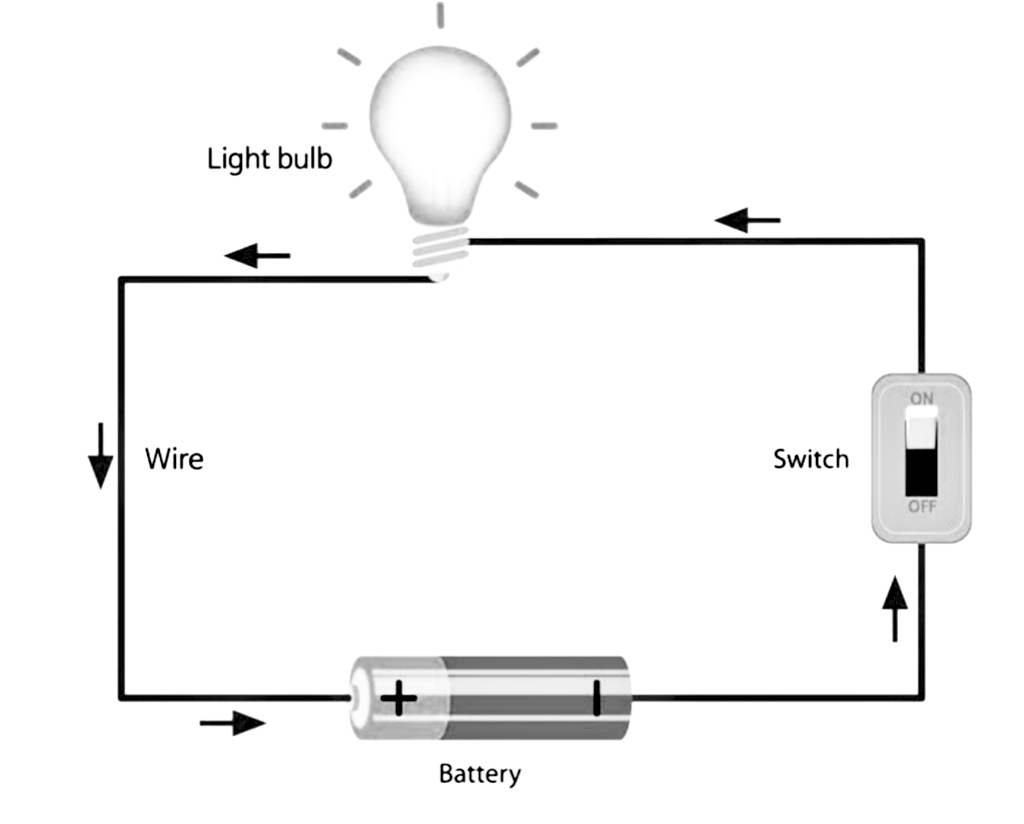Electric circuit
An electrical circuit is a closed, continuous path through which electric current can flow. In a complete electrical circuit, electricity flows from a power source, such as a battery, through various components (such as bulbs, resistors, or switches) and back to the source. If there is an obstruction in the path, current will not flow.
Electric cell
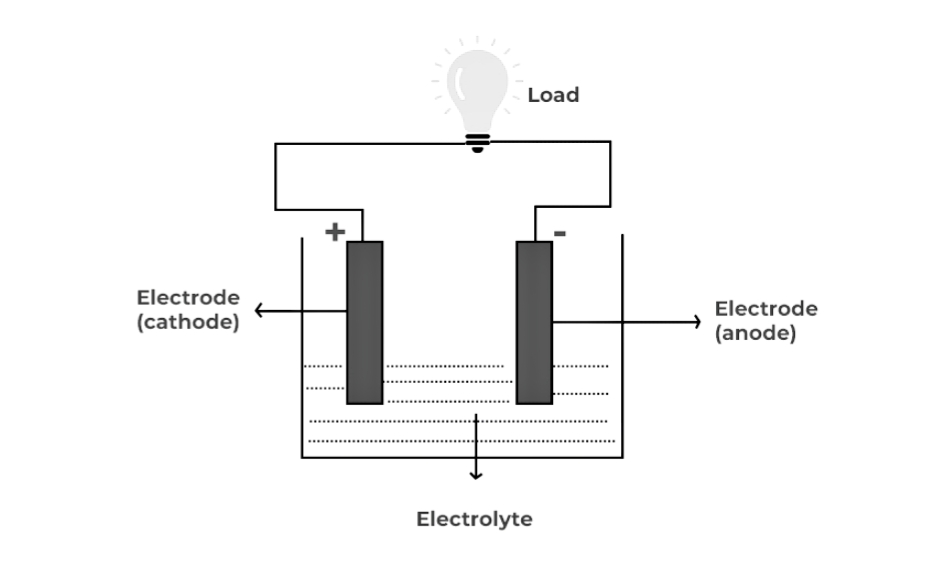
Electric cell is a device which controls the flow of charge in the circuit by converting chemical energy into electrical energy.
It has two metal rods which are called electrodes or plates. The liquid in which it is immersed is called electrolyte.
Electromotive force of the cell
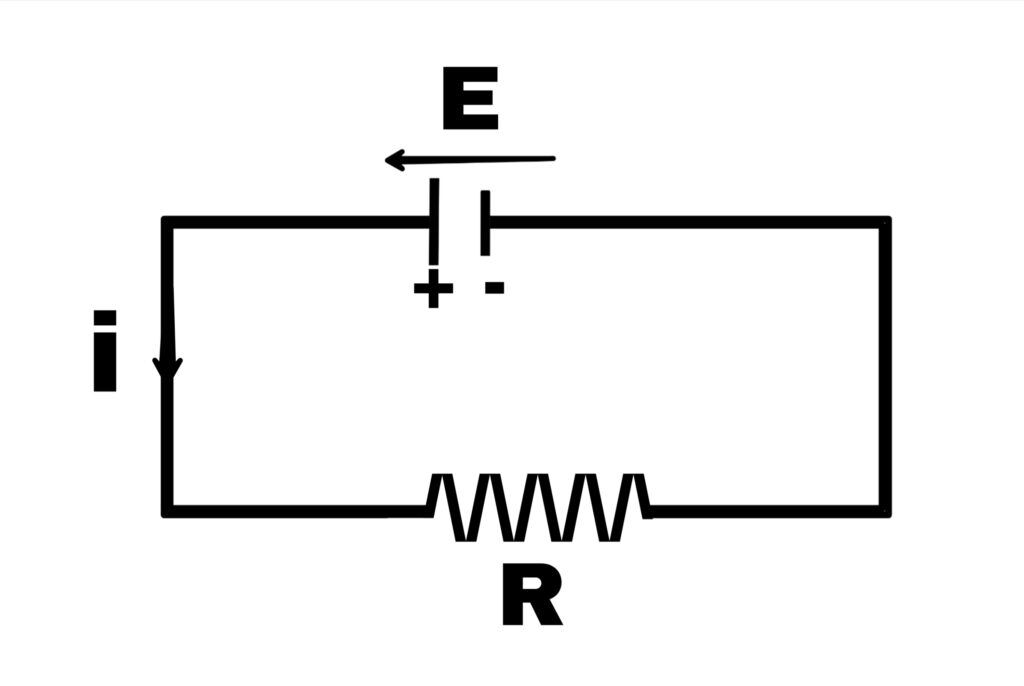
The electromotive force of the cell is represented by E.
If the energy given or the work done by the cell in flowing q coulomb charge in a circuit is W joule, then the electromotive force of the cell
E = W/q
If,
q = 1c
Then,
E = W
Therefore, the work done by the cell in flowing a unit charge in the entire circuit is called the electromotive force of the cell.
Terminal potential difference
Suppose the electromotive force of a cell in a pair of electric circuit is E and the energy given out by the cell when q charge flows in the circuit is W.
Then,
E = W/q
If the charge flowing in all the parts of the circuit is q and the energies spent in different parts of the circuit are W1, W2, —– W3 respectively, then the energy given out by the cell is
W = W1+W2+W3+——-
Therefore, the electromotive force of the cell is
E = W/q
E =( W1+W2+W3+——-)/q
E =W1/q+W2/q+W3/q+——-
E = V1+V2+V3+——
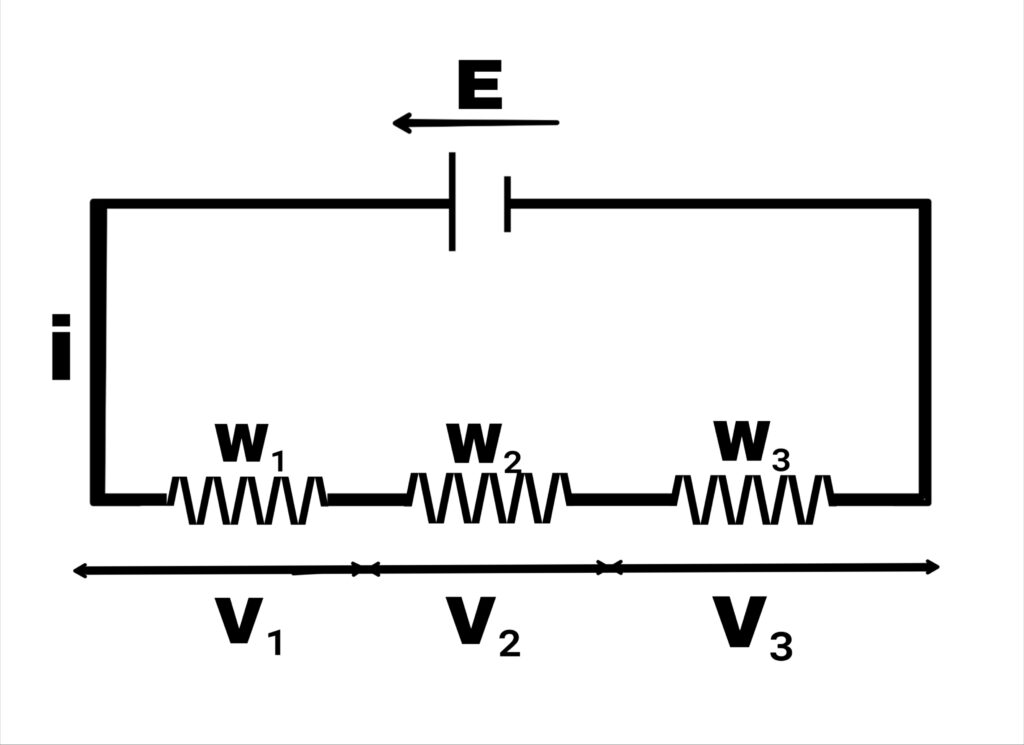
Where V1, V2, and V3 are the terminal potential differences of different parts.
“The work done in passing a unit charge between two points of a circuit is called as the terminal potential difference between those points.”
Internal resistance of a cell
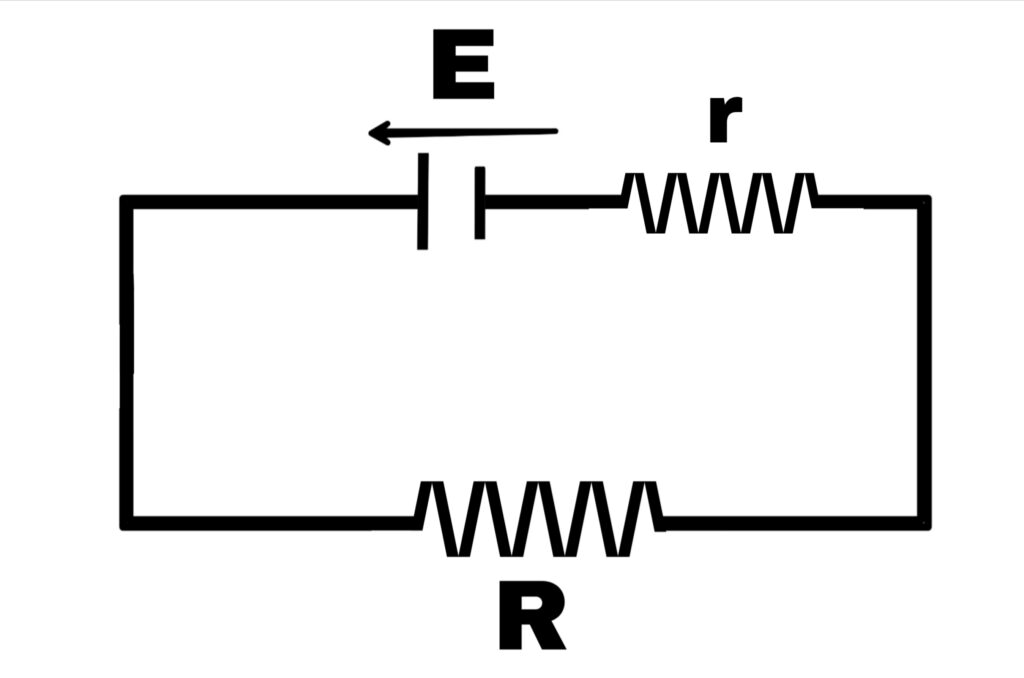
The internal resistance of a cell is represented by r and is defined as follows.
“The obstruction caused by the solution in the flow of electric current between the two plates of a cell is called the internal resistance of the cell.”
The internal resistance of a cell depends on the following things.
It is directly proportional to the distance between the two plates of the cell.
It is inversely proportional to the area of the plates immersed in the solution.
It increases on increasing the concentration of the electrolyte.
It depends on the nature of the electrolyte and the material of the plates.
Terminal potential difference of a cell (v) Relation between electromotive force and internal resistance
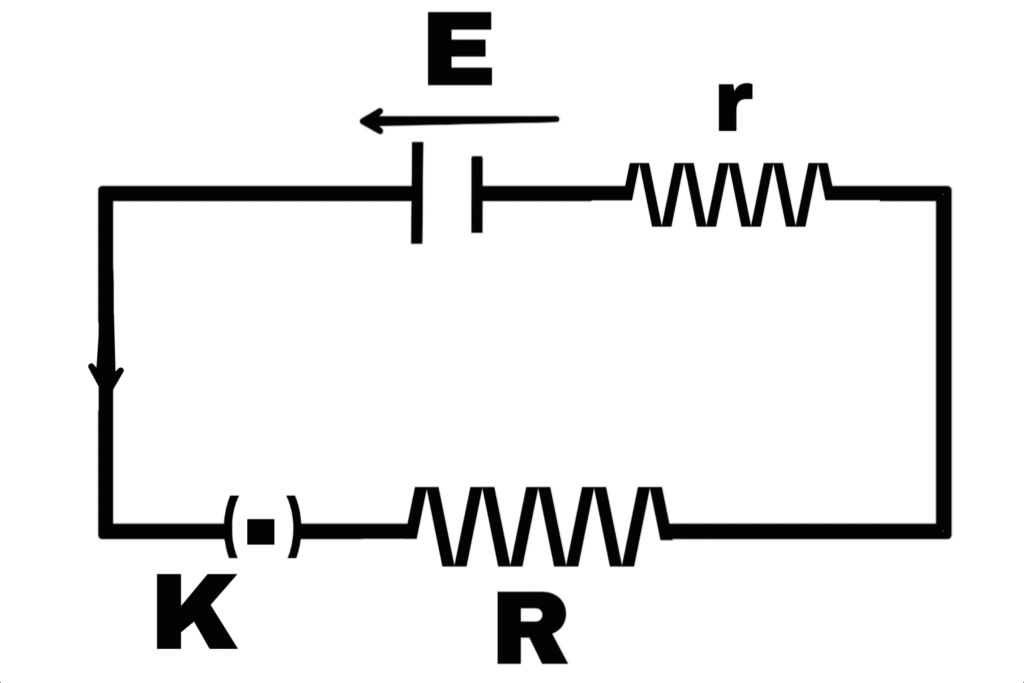
Suppose an electric cell whose electromotive force is E and internal resistance is r. It is connected to external resistance R through a key.
If the electric current i flows in the circuit for time t, then the work done by the electric cell
W = E.w
W = E.i.t ———(1)
The work done by the cell will be equal to the work done outside the electric cell and the work done inside the electric cell.
Hence,
W = Wint + Wext ——(2)
If the potential difference between the outer ends is v, then
Wext = V.i.t
Then the current flows in the circuit for time t. Hence,
The work done by the cell in the internal resistance during the time t when current i flows is
Wint = i².r.t
From equation (2)
W = V.i.t + i².r.t
From equation (1)
E.i.t = V.i.t + i².r.t
E.i.t = i.t(V + i.r)
E = V +i.r
i.r = E-V
r = (E-V)/i
V = E – ir
If,
i = 0
V = E
That is, current cannot be taken from the electric cell.
Or,
If the cell is on open circuit then the terminal potential difference between the plots of the electric cell is equal to the electromotive force of the cell.
When there is electric current i in the circuit, then the potential difference between the ends of the resistance r is
V = i.r
Therefore,
Internal resistance of the cell in this situation
r = E.V/i
r = (E-V)/(V/R)
r = R [(E-V)/V]
r = R (E/V – 1)
Value of current in the circuit
E=V+i.r
E = i(R + r)
i= E/(R + r)

